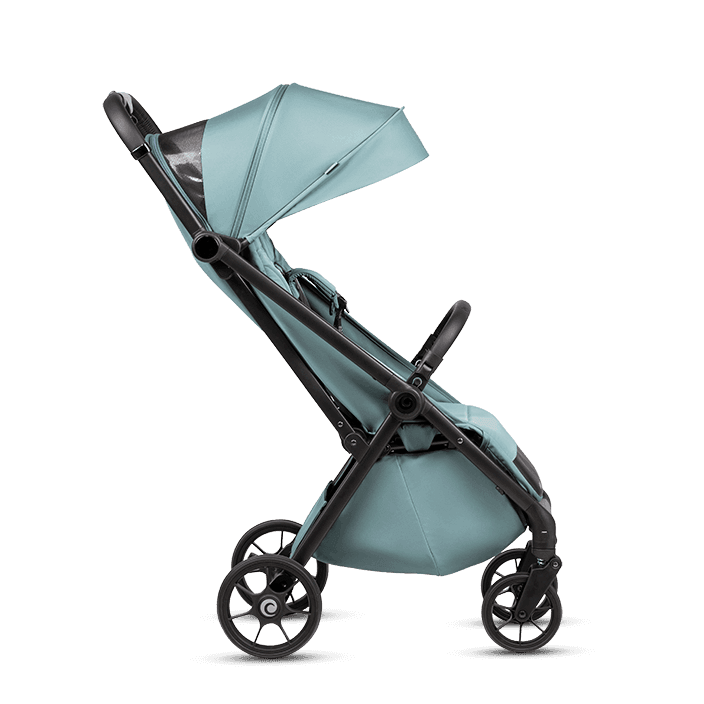Carrycot Comfort: Supporting Natural Baby Posture from Day One
From birth until around 9 months, when babies begin sitting independently, proper body positioning is critical for healthy development. An ergonomic carrycot plays a vital role during this early stage, offering flat, firm support that promotes natural spinal alignment, unrestricted breathing, and freedom of movement – all essential for developing muscles, the nervous system, and even brain function.
According to ergonomist Dr. B. Daams, babies should not be left sitting for long periods in pushchairs. Instead, a spacious, well-ventilated carrycot allows time for lying flat, spending time on the tummy, and moving freely—activities that encourage healthy posture, early motor skills, and even earlier walking.
That’s why TUTIS carrycots are designed extra large – so your baby has room to grow, stretch, and move naturally, even in warm clothing or sleeping bags.
TUTIS ergonomic carrycots include a suite of smart, baby-first features:
- THERMOCOT™ technology ensures thermal insulation, moisture control, and noise reduction.
- Memory foam mattresses with bamboo carbon fibres offer antibacterial protection and adapt to the baby’s shape for deeper rest.
- A panoramic tummy-time window promotes neck and back muscle strengthening.
- UV50+ fabric, wind shields, and noise protection create a peaceful, protected environment.
- Silver-Ion™ tech and formaldehyde-free materials guarantee hygiene and safety.
- EDUSKY™ visual panels and Sensory-Tech textures enhance visual, tactile, and motor development on the go.
Chassis & Suspension: Why Smooth Rides Mean Safer Babies

While it might seem minor, the stroller’s chassis and suspension system play a critical role in your baby’s development and comfort. For growing infants, exposure to excessive or irregular vibrations – especially on uneven terrain – can impact more than just mood. It may overstimulate the nervous system, cause muscle tension, and even affect balance and coordination down the line.
That’s why a stroller with advanced shock absorption is essential. TUTIS integrates multi-point suspension with innovations like:
• Front fork shock absorption – reduces curb impacts and protects baby’s head and neck.
• Adaptive amortization system – independently adjusts to uneven surfaces, reducing rocking and maintaining stability.
• Frame-level shock absorbers – adjust rigidity based on baby’s weight for a tailored, cushioned ride.
• PU rubber wheels – silent and smooth, they reduce vibrations and prevent distracting noise.
Together with the THERMOCOT™ carrycot and memory foam mattress, these features offer a complete system of vibration protection, shielding the baby’s spine, brain, and inner ear balance system.
But it’s not just about the baby – ergonomics for parents matter, too:
- An adjustable handle suits parents of all heights, improving posture and reducing wrist strain.
- A long handlebar and large front wheels make kerbs and tight spaces easier to navigate.
- Lightweight Class 6 aluminum frame allows effortless lifting and transport.
- Extra features like a spacious basket and dedicated bag space help ease the load on your back and shoulders.
With the right chassis and suspension setup, every journey becomes more than just smoother – it becomes safer, healthier, and more enjoyable for both baby and parent.
Seat Unit Ergonomics: Growing with Your Baby
When Can a Child Sit Up? Understanding Milestones and Ergonomic Support
(Insights from Dr. B. Daams)
Many parents are eager to transition their baby from lying down to sitting up in a stroller—but timing and posture are everything. Sitting too early or without the right support can lead to breathing difficulties, spinal stress, and even long-term posture issues.
Up to ~9 months:
At this stage, babies cannot yet sit independently. Their head is still heavy, neck muscles are weak, and they lack the balance needed to stay upright for long periods. When placed in a semi-sitting position too early, there’s a high risk of airway obstruction, since the jaw and tongue can shift and restrict airflow. Additionally, unsupported sitting can strain the spine, compress nerves, and lead to long-term discomfort or spinal misalignment.
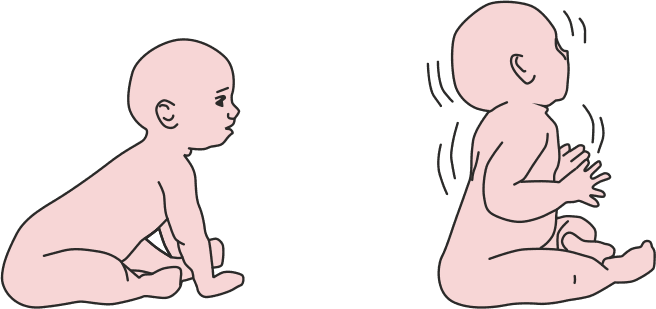
From ~9 months:
Once a baby can sit unaided, they show good balance, a natural spinal curve, and can engage their hands freely. This is the right time to introduce ergonomic seat units that offer adjustable support for back, legs, and feet.
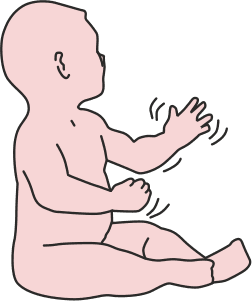
Avoid incorrect positioning:
- Never keep a baby under 6 months in a semi-sitting position for long periods.
- Adjust the footrest to avoid a flat, extended leg position, which may tilt the pelvis and cause improper posture.
- Provide a horizontal lying surface for younger infants to support natural breathing and spinal alignment.
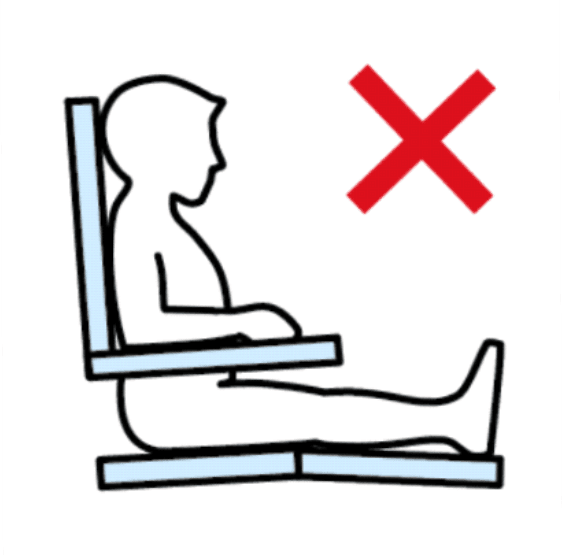
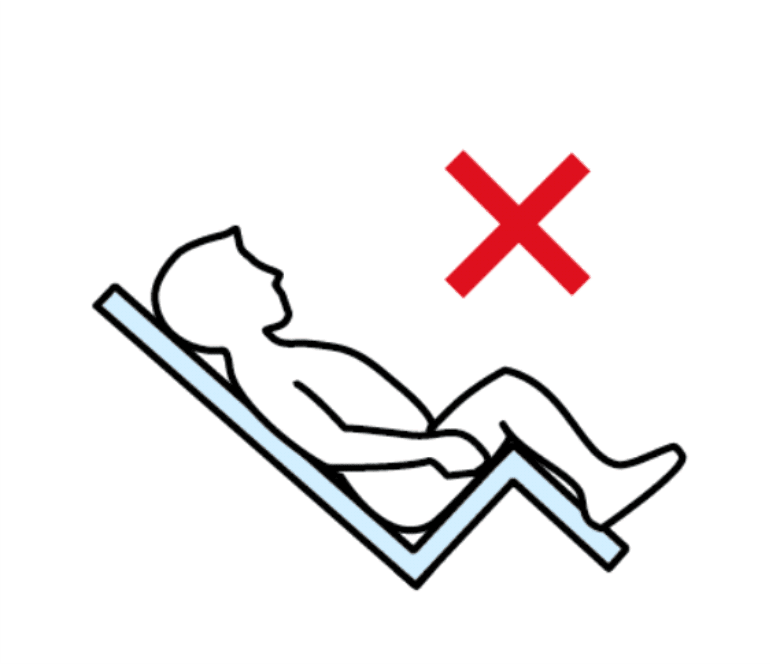
Why is the semi-sitting position not recommended for young babies?
Breathing: When lying on a flat, horizontal surface, the baby’s breathing is free. However, in a semi-sitting position (with the backrest raised), the airway may partially close and obstruct breathing.
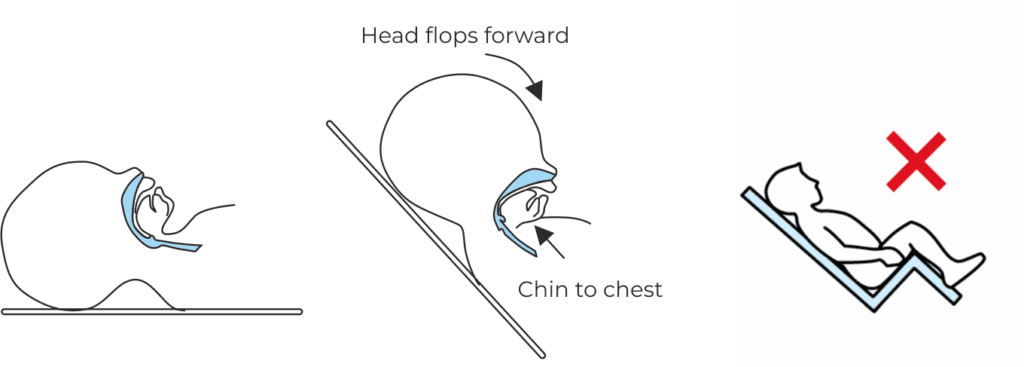
The impact of sitting on the spine and nerves
Improper sitting posture – especially with legs fully extended – can cause the pelvis to tilt backward, leading to spinal misalignment and discomfort. Over time, this position may compress the intervertebral discs, potentially pinching spinal nerves and weakening abdominal muscles. This can result in back pain, restlessness, and even refusal to sit in the stroller.
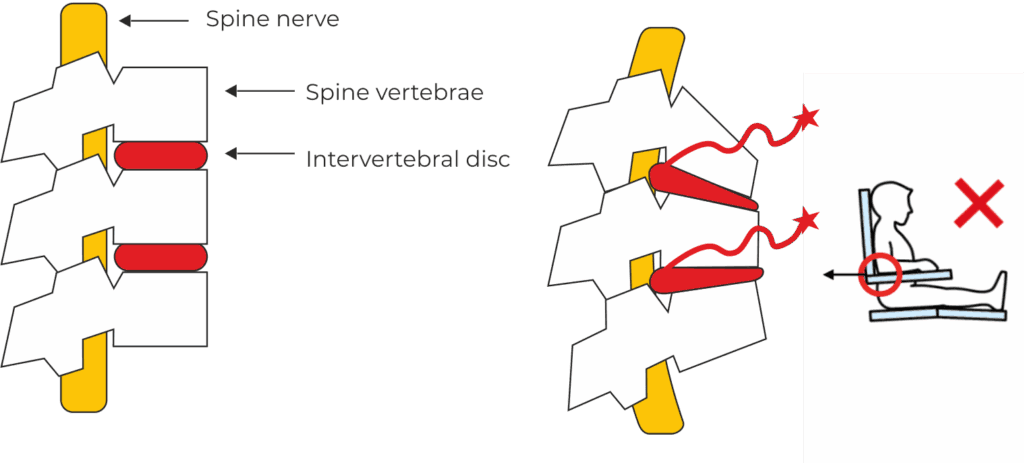
In contrast, correct posture ensures the spine is properly aligned and evenly supported, promoting long-term spinal health and comfort for your child.
Early sitting habits matter. Poor posture during infancy can increase the risk of kyphosis, scoliosis, and even affect digestion and cardiovascular health later in life. With the right ergonomic setup and careful timing, you can support your child’s healthy growth, comfort, and development – one seat adjustment at a time.
Ergonomic Design for Baby’s Comfort (and Yours Too)
When it comes to stroller seat units, thoughtful ergonomic design goes far beyond aesthetics – it directly supports your baby’s health, comfort, and development, while making everyday life easier for parents.
Built for Baby’s Body
- Spacious Seat Design
Whether it’s summer or snow season, the generously wide seat provides ample room for babies bundled in winter gear, sleeping bags, or covered with blankets. This means freedom of movement and full comfort year-round. - High Backrest & Extended Seat
Designed to grow with your child, the high backrest offers solid support up to around age 4. The extra-long seat base allows for comfortable naps, even when your little one is fully dressed in winterwear. - Three Recline Positions
The seat adjusts to three positions to match your child’s needs throughout the day:- Active sitting – perfect for play and discovery
- Intermediate recline – great for relaxing or light dozing
- Flat sleeping – essential for deeper, healthier sleep

Plus, the seat base tilts back ~4°, helping prevent your child from sliding forward—a small detail that makes a big difference in comfort and hip alignment.
- Enclosed Protection
High side walls, an adjustable footrest, and a fully extendable canopy create a cozy, wind-protected cocoon. It’s a must-have for chilly days and quiet stroller naps.
Designed with Parents in Mind
- One-Hand Backrest Adjustment
Quickly shift your baby’s position from upright to sleeping with just one hand—no struggle, no need to wake them. - Magnetic Buckles
Say goodbye to fiddly clasps. Magnetic harness fasteners make securing or releasing your baby effortless, ideal for stress-free outings. - Lightweight Aluminum Frame
Strong yet light, the aluminum chassis ensures easy maneuverability, especially when combined with the seat unit.
Whether you’re walking in the city or napping in the park, an ergonomic seat unit that adapts to your baby’s needs – and supports yours – makes every moment smoother, safer, and more enjoyable.

